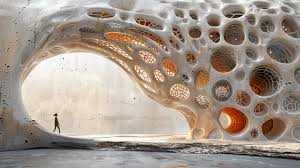
Mycelium, the root structure of fungi, has gained significant attention in recent years for its potential as a sustainable material in the construction industry. As the world searches for eco-friendly alternatives to traditional building materials, mycelium offers a unique and versatile solution. This article explores the various aspects of mycelium construction, its benefits, applications, and the future of this innovative material.
What is Mycelium?
Mycelium is the vegetative part of fungi, consisting of a network of fine, thread-like structures called hyphae. These hyphae grow in search of food, forming vast underground networks that decompose organic material. Mycelium is not only vital to the ecosystem but has also emerged as a promising material for sustainable construction due to its lightweight, biodegradable, and fire-resistant properties.
The Science Behind Mycelium Construction
Mycelium construction involves cultivating fungal spores on organic waste materials like sawdust, straw, or agricultural by-products. The fungal spores grow and bind these materials together, forming a solid, lightweight composite. Once the mycelium has fully colonized the substrate, it is dried to stop growth, creating a sturdy, biodegradable material that can be molded into various shapes.
Benefits of Mycelium in Construction
Sustainability and Eco-Friendliness
Mycelium is an entirely natural material that can be grown using organic waste, making it an excellent alternative to traditional construction materials like concrete, bricks, or plastics. Its cultivation requires minimal energy and produces no toxic by-products, contributing to a reduced carbon footprint in the building process.
Biodegradability
Unlike conventional building materials, mycelium is fully biodegradable, making it ideal for temporary or eco-conscious structures. After its useful life, mycelium decomposes into the earth without harming the environment.
Insulation and Fire Resistance
Mycelium is a natural insulator, helping regulate indoor temperatures and reducing the need for artificial heating and cooling systems. Additionally, it is naturally fire-resistant, adding a layer of safety to buildings constructed with this material.
Customizability and Lightweight Nature
One of the unique advantages of mycelium construction is its ability to be molded into any shape during the growth process. This flexibility allows architects and designers to explore creative, non-traditional forms. Its lightweight nature also reduces transportation costs and simplifies installation.
Applications of Mycelium in Construction
Building Insulation
One of the most popular uses of mycelium is as an insulating material. It is used in panels for walls, ceilings, and floors, providing excellent thermal and sound insulation without relying on synthetic materials.
Mycelium Bricks
Mycelium bricks are emerging as a viable alternative to conventional bricks and blocks. These bricks are strong, lightweight, and can be produced with minimal environmental impact. They are particularly useful in modular construction, where ease of transport and assembly is critical.
Furniture and Interior Design
Designers have also started exploring mycelium for furniture and interior products. The material’s unique texture and sustainability appeal to eco-conscious consumers, and its ability to be shaped into various forms opens new possibilities for artistic expression in design.
Temporary and Pop-Up Structures
Because of its biodegradability and lightweight nature, mycelium is an ideal material for temporary structures, such as exhibition booths, emergency shelters, or pop-up event spaces. These structures can be easily assembled, dismantled, and returned to the earth without leaving a trace.
Challenges in Mycelium Construction
Despite its numerous benefits, mycelium construction faces several challenges. One of the main hurdles is scaling production to meet the demands of large-scale construction projects. Additionally, while mycelium is strong, it may not yet match the durability of conventional materials like concrete or steel, limiting its use in high-load-bearing structures. Research is ongoing to improve the strength and longevity of mycelium-based products.
The Future of Mycelium Construction
The future of mycelium in construction looks promising as researchers and architects continue to explore its potential. Advances in biotechnology may help overcome current challenges, allowing mycelium to replace less sustainable materials in the construction industry. Additionally, as climate change and environmental concerns drive the demand for greener building practices, mycelium could play a key role in shaping the future of eco-friendly architecture.
Mycelium construction represents an exciting frontier in sustainable building. With its renewable nature, biodegradability, and versatility, mycelium has the potential to revolutionize the way we think about construction materials. While challenges remain, continued research and innovation could unlock new possibilities, making mycelium a staple in the future of environmentally conscious architecture.
Subscribe to Follow Global Trends for daily global news.
Find Out How To Make Money As A Full Time Writer/Blogger Guide.
To Advertise, Advertise Your Affiliate Links on FollowGlobalTrends.com for Just $1 Per Link Per Month!
Related Articles
Sustainable building materials
Written By: Enyoghasi Ngozi pricillia

